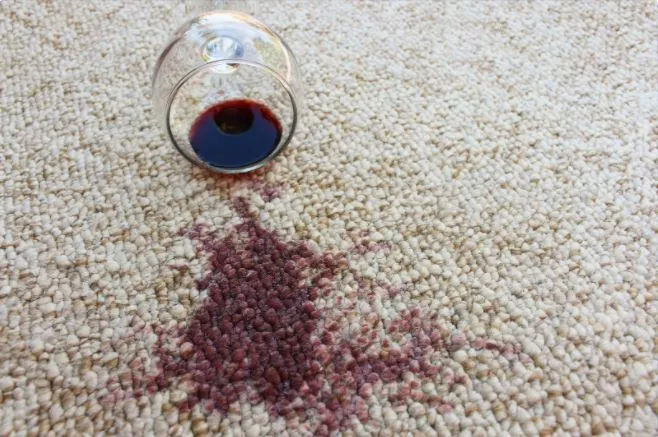Upholstery plays an important role in the comfort and appearance of your home. From sofas and armchairs to dining seats and fabric headboards, clean upholstery makes a huge difference to how fresh your living space feels. However, keeping it in top condition can be a challenge. While many people try DIY upholstery cleaning methods, not all of them are safe or effective. At Folkestone Carpet Cleaning in Folkestone, Kent, we often help homeowners who have unintentionally made stains worse or damaged fabrics through incorrect cleaning techniques.
Understanding Upholstery Fabrics
Before reaching for a cleaning product, it’s important to know what type of material you’re dealing with. Upholstery can be made from a wide range of fabrics such as cotton, linen, polyester, velvet, leather, or blends. Each has its own care requirements and reacts differently to moisture, heat, and cleaning chemicals.
Always check the manufacturer’s care label for cleaning codes like:
- W – Water-based cleaning allowed
- S – Use solvent-based cleaners only
- WS – Either water or solvent-based cleaning is suitable
- X – Vacuum only; no liquid cleaners should be used
If in doubt, testing a small, hidden area before cleaning can help prevent irreversible damage.
DIY Upholstery Cleaning Methods That Work
There are a few safe and effective methods homeowners can use to maintain clean and fresh upholstery between professional cleans.
1. Regular Vacuuming
Vacuuming your upholstery weekly helps to remove dust, crumbs, and pet hair before they settle deeper into the fabric. Use a soft brush attachment to avoid abrasion and pay extra attention to seams and crevices where debris collects.
2. Gentle Spot Cleaning
For small stains or spills, act quickly. Blot (never rub) the area with a clean microfibre cloth to absorb as much liquid as possible. Then, depending on the fabric type, you can gently clean using a mild mixture of warm water and a small amount of gentle dish soap. Always blot the area dry with a clean towel afterwards.
3. Baking Soda for Odour Control
Sprinkling a thin layer of baking soda on upholstered surfaces can help neutralise odours. Leave it for about 15 minutes before vacuuming thoroughly. This works particularly well on pet-friendly homes or fabric chairs that trap smells easily.
4. Using Steam Cleaners (When Suitable)
For water-safe fabrics, light steam cleaning can lift surface dirt and refresh fibres. However, be cautious not to over-wet the material, as excessive moisture can lead to mould, shrinkage, or dye bleeding.
DIY Upholstery Cleaning Mistakes to Avoid
While DIY cleaning can handle light maintenance, there are several common mistakes that can cause more harm than good.
Overusing Water
Soaking upholstery is one of the biggest errors homeowners make. Too much water can cause mould growth, damage padding, or lead to permanent water marks. Always use minimal moisture and ensure proper drying.
Using Harsh Chemicals
Household cleaners like bleach, ammonia, or multipurpose sprays can strip colour and weaken fabric fibres. These products may clean temporarily but often cause irreversible fading or texture changes.
Scrubbing Stains
It’s tempting to scrub a stubborn stain, but doing so pushes the dirt deeper and damages the fibres. Gentle blotting is always the safer and more effective method.
Ignoring Fabric-Specific Needs
Applying one cleaning method to every type of fabric rarely ends well. Leather, suede, and delicate natural fibres require specific treatments and products that differ greatly from synthetic materials.
At Folkestone Carpet Cleaning, we see many cases where DIY efforts have caused stains to set or fabrics to distort. Professional cleaning ensures that each material is treated with the correct method and equipment for the best possible result.
When to Call in the Professionals
While light maintenance can be done at home, professional upholstery cleaning is essential for deep cleaning and restoration. If your furniture has stubborn stains, odours, or general dullness that DIY cleaning can’t resolve, a trained technician can revive it safely and effectively.
Our team at Folkestone Carpet Cleaning uses specialist equipment and advanced cleaning techniques to remove deep-set dirt, allergens, and bacteria from your upholstery, leaving your furniture refreshed, clean, and long-lasting.
Conclusion
DIY upholstery cleaning can help maintain your furniture between professional cleans — but only if done carefully and with the right methods. Knowing what works and what to avoid is key to keeping fabrics looking fresh and damage-free. For safe, thorough, and professional upholstery cleaning in Folkestone, Folkestone Carpet Cleaning provides expert solutions tailored to every fabric type, ensuring your furniture looks and feels its best all year round.
Call us on: 01303 765492
Click here to find out more about Folkestone Carpet Cleaning
Click here to complete our contact form and see how we can help with your carpet needs.
